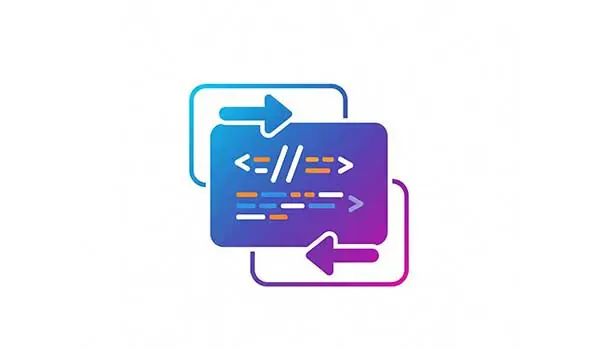HTML Formatter | View and Format HTML Data
Unlock Clarity and Efficiency: Your Ultimate HTML Formatter to View and Format HTML Data
In the intricate world of web development and content creation, the ability to efficiently view and format HTML data is not just a convenience but a cornerstone of productivity and code quality. An HTML Formatter serves as an indispensable tool in this regard, transforming raw, often convoluted HyperText Markup Language (HTML) code into a structured, readable, and manageable format. Whether you're a seasoned developer debugging complex layouts, a content editor working with CMS-generated markup, or a student learning the fundamentals of web structure, understanding how to effectively utilize an HTML Formatter can dramatically improve your workflow, reduce errors, and enhance collaboration. This comprehensive guide will delve into the significance of using an HTML formatter, explore its key features, and highlight how it empowers users to view and format HTML data with unparalleled ease and precision, ultimately leading to cleaner code and more efficient development cycles.
The Crucial Role of an HTML Formatter in Modern Web Development
The digital landscape is built upon HTML, the standard markup language for documents designed to be displayed in a web browser. However, HTML code, especially when generated by various systems, copied from different sources, or worked on by multiple developers, can quickly become messy, unindented, and difficult to decipher. This is where an HTML Formatter steps in, offering a robust solution to view and format HTML data in a consistent and human-readable way. Without proper formatting, developers might spend an inordinate amount of time trying to understand the structure of the code, identify nesting issues, or locate specific elements. This not only hampers productivity but also increases the likelihood of introducing errors. A dedicated HTML Formatter automates the process of applying consistent indentation, line breaks, and spacing, instantly making the code more accessible and understandable. This clarity is paramount, not just for individual developers but for entire teams working collaboratively on projects, ensuring that everyone is on the same page and can easily interpret the markup.
How to Effectively View and Format HTML Data Using an Online Formatter
Utilizing an HTML Formatter to view and format HTML data is typically a straightforward process, designed for maximum efficiency. Most online HTML formatters provide a simple user interface where you can paste your raw HTML code directly into a text area. Upon clicking a "Format," "Beautify," or "Prettify" button, the tool instantly processes the input and outputs a well-structured version of your HTML. This formatted output is then displayed, often with syntax highlighting, making it incredibly easy to view and format HTML data with visual clarity. You can then copy this cleaned-up code for use in your projects. The ability to quickly paste, format, and copy makes these tools invaluable for quick tasks, such as cleaning up a snippet of code before embedding it, or for understanding the structure of HTML retrieved from a third-party source. This immediate transformation from chaos to order is what makes an HTML Formatter an essential part of a developer's toolkit, streamlining the often tedious task of manual code cleaning.
Key Features and Benefits of a Powerful HTML Formatter
A high-quality HTML Formatter offers more than just basic indentation when you need to view and format HTML data. Look for tools that provide configurable options, such as the type of indentation (tabs or spaces) and the number of spaces per indent. Advanced formatters might also offer options for handling inline elements, wrapping long lines, and even removing unnecessary whitespace to slightly reduce file size (though minification is a separate, more aggressive process for this). Syntax highlighting is another critical feature, as it uses different colors for tags, attributes, and content, significantly improving readability and making it easier to spot syntax errors or typos at a glance. Some tools may also offer basic validation hints, pointing out unclosed tags or structural issues, although a dedicated HTML validator should be used for comprehensive error checking. The primary benefit remains the immense improvement in code readability and maintainability, which directly translates to faster debugging, easier collaboration, and a more professional approach to web development. When you can clearly view and format HTML data, you empower yourself to work more efficiently and produce higher-quality results.
The Impact of Well-Formatted HTML on Productivity and Debugging
The ripple effects of using an HTML Formatter to consistently view and format HTML data extend deep into the development lifecycle. Well-formatted HTML is significantly easier to debug. When elements are clearly indented and structured, it becomes much simpler to trace parent-child relationships, identify mismatched or unclosed tags, and understand the flow of the document. This can save developers countless hours that would otherwise be spent squinting at a wall of unformatted text. Furthermore, when code is consistently formatted, code reviews become more efficient. Reviewers can focus on the logic and functionality rather than getting bogged down by inconsistent styling or readability issues. This improved clarity also benefits learning; students and junior developers can more easily grasp HTML concepts when presented with well-structured examples. By making it effortless to view and format HTML data, these tools foster better coding habits and contribute to a more streamlined and less error-prone development process, ultimately enhancing overall project quality and developer satisfaction.
In conclusion, an HTML Formatter is an indispensable utility for anyone working with HTML. Its ability to help you view and format HTML data transforms potentially chaotic code into a clean, understandable, and manageable structure. This not only boosts individual productivity and simplifies debugging but also enhances team collaboration and promotes best practices in web development. By incorporating a reliable HTML Formatter into your workflow, you ensure that your HTML is always presented in its most accessible and professional form, laying a solid foundation for successful web projects.





